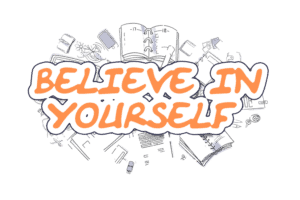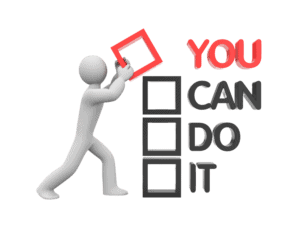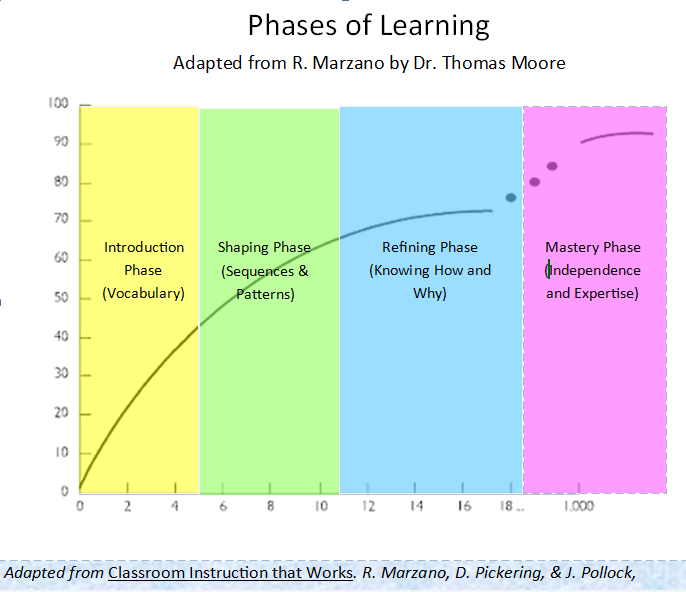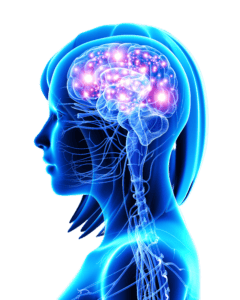
This blog post is about the positive impact a growth mindset can have on teachers and students for high levels of learning. When mistakes and failures are viewed as opportunities to learn and improve skills, fear of failing disappears.
EDUCATION FADS AND MIXED RESULTS
The sphere of education seems to love using words and themes to draw attention and focus to various initiatives. When I first began my teaching career, the big theme was “Site-Based Management.” It was the placebo equivalent of making building faculty believe they had some input into the bureaucracy that imposed on their autonomy. Then came Whole Child Learning, Inclusion, Data Driven Decision Making, Technological Integration, Professional Learning Communities, Whole Faculty Study Groups, Pyramid of Interventions, Virtual Learning, Immersion Learning, and dozens of others.
To be fair, some of these words or themes had – and still have – tremendous merit, especially when implemented according to plan and with sustained integrity and continuous re-training. Other programs, however, were faddish, poorly vetted, and poorly implemented. Too often, these ineffective programs failed to deliver the promised impact on students. Nearly as detrimental, each year’s “new thing” contributed to teacher cynicism. The programs may have satisfied required professional development criteria, but they often failed in purpose and outcome.
SOMETHING DIFFERENT AND TIMELESS
There is, however, one term in education that has always been at the center of every superstar teacher’s approach. It precedes our English language in many forms and extends historically even before Socrates tutored Plato in ancient Greece. Its impact on teachers and students can be integral to learning outcomes at all ages, from Pre-K to graduate school. Ignoring this word invites a mindset toward pessimism that builds insurmountable learning walls and extinguishes optimism. Most unbelievable of all is that, in English, it is only three letters.
The word is YET.
Anticlimactic? I don’t think so.
Consider the first weeks in a Kindergarten classroom. Can any of the students read at a high school level? Probably not. Then why don’t we just give up? Because of “yet”- they probably can’t…yet!
Can 7th graders all do Algebra or Trigonometry? Probably not very well…yet!
Can students who struggle with sentence structure or point of view by high school be disregarded? Not yet!
FUTURE FOCUSED
You see, “yet” implies that students have the ability to do things in the future that they can’t do today. The same “yet” is true for teachers, counselors, principals, superintendents, secretaries, and lunch workers, too. In fact, every person in every occupation – computer programmers, police officers, college graduates, stay-home moms or dads, and heavy equipment operators – can be redeemed by the power of “yet!”
The same “yet” is true for teachers, counselors, principals, superintendents, secretaries, and lunch workers, too. In fact, every person in every occupation – computer programmers, police officers, college graduates, stay-home moms or dads, and heavy equipment operators – can be redeemed by the power of “yet!”
“Yet” means we don’t have to be permanently judged by our current inadequacies and mistakes. How great is that?
TWO VERY DIFFERENT VIEWS
In her amazing work beginning at Columbia University and then continuing at Stanford University, Dr. Carol Dweck’s research highlights the amazing power of “yet” as she distinguishes between a “fixed” mindset and what she calls a “growth” mindset in terms of learning information and skills.
 Dr. Dweck, in her terrific 2004 book Mindset: The New Psychology of Success, defines a “fixed” mindset as a way of thinking that says, “I’m as good as I’ll ever be. I either have the talent or I don’t. If I can do something easily, it proves I have talent, but if I have to work very hard at it, it just isn’t what I was born to do. There is no sense in even trying hard because I’ll probably just fail anyway, and that would be embarrassing and unacceptable.”
Dr. Dweck, in her terrific 2004 book Mindset: The New Psychology of Success, defines a “fixed” mindset as a way of thinking that says, “I’m as good as I’ll ever be. I either have the talent or I don’t. If I can do something easily, it proves I have talent, but if I have to work very hard at it, it just isn’t what I was born to do. There is no sense in even trying hard because I’ll probably just fail anyway, and that would be embarrassing and unacceptable.”
 On the contrary, she describes those with a “growth” mindset of recognizing the power of our brains to learn and create new neural pathways that turn difficult tasks, skills, and concepts into manageable, even fluently mastered activities. It is the mental posture that says, “Even though I can’t understand it right now, if I listen to my teacher, and follow their instruction with effort and practice I CAN get it. I may not be able to do it yet, but with effort I will be able to in the near future!”
On the contrary, she describes those with a “growth” mindset of recognizing the power of our brains to learn and create new neural pathways that turn difficult tasks, skills, and concepts into manageable, even fluently mastered activities. It is the mental posture that says, “Even though I can’t understand it right now, if I listen to my teacher, and follow their instruction with effort and practice I CAN get it. I may not be able to do it yet, but with effort I will be able to in the near future!”
A TEACHER’S SUPERPOWER
A teacher, using the power of YET , might see that a class of students has not understood an important idea. Rather than moving on to the next topic, resigned to the notion that this year’s class isn’t as smart or capable as prior classes, the teacher with a growth mindset has the option – even the obligation- to consider that he or she has the power and opportunity to teach the concept in a new way. It’s not that the class can’t learn it; they just haven’t learned it …yet! Additional effort on the part of the teacher and the students will yield positive, long-lasting results which can then serve as building blocks in a firm foundation of knowledge upon which increasingly complex ideas can be added.
REMEMBER THE LEARNING LINE?
This was implied years ago in Dr. Robert Marzano’s insightful book, Classroom Instruction that Works. Tens of thousands of teachers embraced this book because it provided the nine most effective teaching strategies measured by a meta-study of research conducted by Dr. Marzano and his team. Unfortunately, many teachers grabbed onto the first two strategies – Compare and Contrast and Visual Representations – which were indeed beneficial. But, in my humble opinion, the most profound insight of the whole book was tucked within Chapter 4 that revealed The Learning Line.

The Learning Line, as you can see, indicates an amazingly steep acquisition of understanding toward mastery, in the first 3 to 7 “exposures” to a new concept, such as subtraction that requires “borrowing’ or identifying subjects and predicates in simple sentences. It is probably important to define the term “exposure” as a cycle of attempting a skill that includes timely feedback. Feedback is necessary to ensure that the correct process is being accomplished. Without timely feedback, the possibility of incorrect practice might delay initial correct understanding and frustrate learners. Failures will occur, but appropriate feedback helps students correct misunderstanding and adjust appropriately. ______’s research has found that minimizing the time-loop between action (answering a question) and feedback (identifying correct or incorrect and strategically redirecting if incorrect), the faster humans, including students, learn. For example, the feedback loop on video games is almost immediate, so kids improve rapidly to advance levels. In schoolwork, however, a feedback loop on a worksheet may extend over the period of hours or even days. Imagine if the feedback loop for schoolwork could approach that of video games! Don’t get discouraged – it just may not be happening YET! (See? It works for almost everything!)
BACK TO MY POINT
Now, referring back to the graph, you might notice that in spite of rapid improvement in the first few exposures, actual concept mastery is less than 50%, so not quite ready for independence. The next 5 to 7 practice iterations of the concept only grow mastery to 65%. It is not until a student has had 24 or more practices with appropriate feedback that he or she can safely work independently towards full mastery. Incidentally, to reach 90% mastery, according to the Learning Line, takes more than 1,000 iterations! (Think multiple years and team effort and focus)
Incidentally, to reach 90% mastery, according to the Learning Line, takes more than 1,000 iterations! (Think multiple years and team effort and focus)
Without a growth mindset and the power of “yet,” who would persevere through 24 iterations? Much less 1,000 repetitions or more! Recognizing and expecting to improve with careful practice, receiving specific guidance along the way, means students can know that they WILL get it, even though it is difficult and uncomfortable in the beginning. In addition, receiving timely feedback assures each one that they are not traveling the learning path alone or in the wrong direction.
THE AMAZING HUMAN BRAIN
 Since 1990 and the invention of the functional Magnetic Resonance Imaging (fMRI) machine, phenomenal strides have been made in the field of neuroscience regarding understanding of the human brain, particularly the neuroplasticity of the brains of young people (see related article The Amazing Human Brain). Neuroscientists have proven that when humans learn something new, unique neural pathways actually form like a new trail through dense brush. When the information is encountered again – a second exposure with timely feedback – the newly formed neural pathway grows more stable. Each iteration strengthens the neural pathway, making adjustments and corrections as each conceptual nuance is learned. In layman’s terms, neurons that FIRE together WIRE together.
Since 1990 and the invention of the functional Magnetic Resonance Imaging (fMRI) machine, phenomenal strides have been made in the field of neuroscience regarding understanding of the human brain, particularly the neuroplasticity of the brains of young people (see related article The Amazing Human Brain). Neuroscientists have proven that when humans learn something new, unique neural pathways actually form like a new trail through dense brush. When the information is encountered again – a second exposure with timely feedback – the newly formed neural pathway grows more stable. Each iteration strengthens the neural pathway, making adjustments and corrections as each conceptual nuance is learned. In layman’s terms, neurons that FIRE together WIRE together.
Eventually, with repeated practice and feedback, the neural pathway strengthens to a point of extreme efficiency. When this is established, the output is what we might call skill “mastery.”
THE MYTH OF PRODIGIES
In reality, no one just “gets it,” whether we’re talking about Mozart with music or Bobby Fisher with chess. I’m not saying these individuals and many others like them don’t have remarkable talent or skill. The biggest difference in these prodigies was that they had an ability and interest to acquire their “exposures” and “perfect practice” very early and very often, before people even noticed the youngsters were paying attention. By the time these prodigies’ same-aged peers were being introduced (exposure #1), the young phenoms were already approaching significant mastery (exposure #1,000+).
FAIL FORWARD TOWARD SUCCESS
Learning new things is uncomfortable. Mistakes are inevitable. Failure is almost assured, especially at first. But it doesn’t mean you are a failure. That’s why a growth mindset – and the power of “yet“– should be foundational at every level of learning.
If it’s okay to fail and learn from mistakes, there is no need for students to fear difficult concepts. Rather, to turn focus to the future, a teacher can promote the amount of accomplishment and learning taking place when students persevere, ask new questions, or apply prior learning to emerge successful. In time, habits of overcoming learning obstacles will become embedded with students’ effort processes. Imagine how much cognitive and personal growth students can experience just by embracing the power of YET!
SUMMARY

Education fads will come and go. Initiatives will be introduced, implemented (read “mandated”), and have a positive effect — or not. But the power of “yet” is limited only by the mindset of the person in control of their own learning, or the educator who recognizes their influence over the students they teach and impact.
As a teacher, coach, director, mentor, or role model you have tremendous influence over your students, how they approach learning, and the inevitable challenges they will face along the way. This is an incredible, almost daunting, power. This is teaching!
Now the only question is: How will you make the most of the power of YET?
For the Greatest Good,
Dr. Tom

